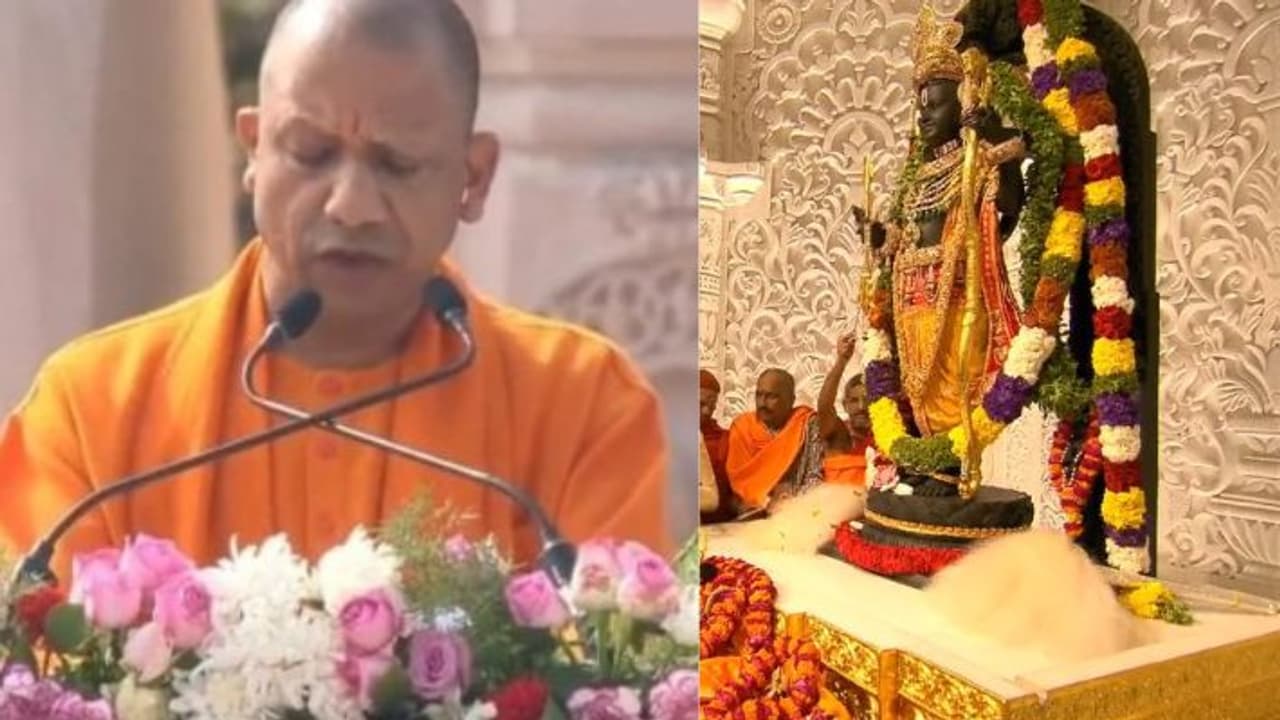CM Adityanath assured that Ayodhya would no longer witness curfews or gunshots but would be illuminated with events like Deepotsav and Ramotsav. He highlighted that the establishment of Ram Lalla marked the proclamation of Ram Rajya.
In the aftermath of the 'pran-pratishta' ceremony at Ram Mandir in Ayodhya on January 22, Uttar Pradesh Chief Minister Yogi Adityanath symbolically handed a replica of the temple to Prime Minister Narendra Modi. Emphasizing a shift in the atmosphere, Adityanath expressed that Ayodhya's streets would now resonate with the 'Sankirtan' of Shri Ram instead of gunfire.

CM Adityanath assured that Ayodhya would no longer witness curfews or gunshots but would be illuminated with events like Deepotsav and Ramotsav. He highlighted that the establishment of Ram Lalla marked the proclamation of Ram Rajya. The chief minister participated in the 'pran-pratishta' ceremony alongside PM Modi, RSS chief Dr. Mohan Bhagwat, and UP Governor Anandiben Patel.
The Ram temple, constructed in the traditional Nagara architectural style, stands with impressive dimensions, measuring 380 feet in length (east-west), 250 feet in width, and soaring to a height of 161 feet. Comprising individual floors at 20 feet each, supported by 392 pillars and adorned with 44 gates, the vertical marvel is a testament to intricate craftsmanship.
During the event, Prime Minister Modi humbly apologized to Lord Ram, expressing regret that despite centuries of effort, sacrifice, and penance, the construction of the Ram Temple remained incomplete. He sought forgiveness, believing that Lord Shri Ram would understand and pardon the delay as the historic project had finally reached fruition.
During the Ram Janmabhoomi movement, momentum surged following the Rath Yatra led by BJP stalwart Lal Krishna Advani. Ayodhya became a focal point, witnessing escalating tensions. As BJP and Sangh Parivar leaders mobilized supporters, then Chief Minister of Uttar Pradesh, Mulayam Singh Yadav, responded by deploying a substantial police force, vowing to prevent any entry into Ayodhya.
On October 30, devotees, blocked from reaching Ayodhya by disrupted bus and train services, embarked on a journey by foot. Clashes erupted between protesters and the police along the route leading to the now-demolished Babri Masjid. In a dramatic turn, a sadhu commandeered a security bus, breaching barricades. In response, the police vigorously pursued and confronted the demonstrators. Similar clashes occurred on November 1, resulting in at least 17 casualties due to police firing.
Criticism targeted the Mulayam Singh Yadav government for its handling of the situation, particularly the use of police force. Yadav defended the decision as "painful, yet necessary," citing a high court ruling aimed at maintaining peace at the disputed site.
The following year, Yadav faced defeat in the Assembly election, leading to the BJP assuming power. Kalyan Singh became the Chief Minister, and during his tenure on December 6, 1992, the Babri Masjid was demolished.
